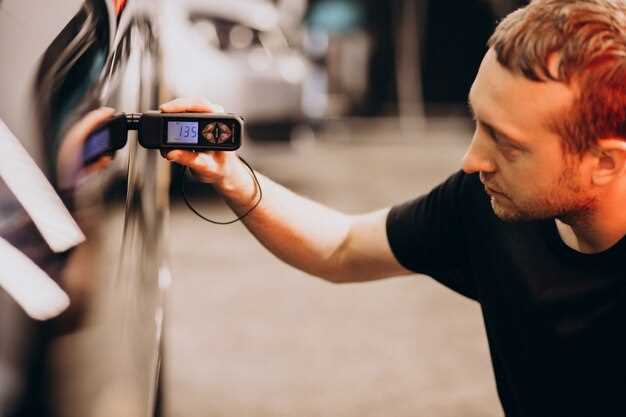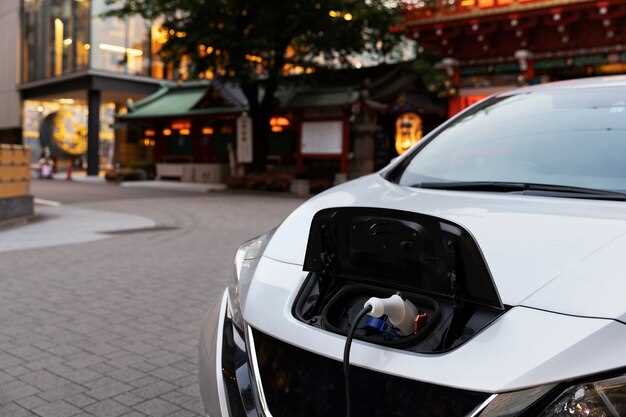
The intricate nature of exotic cars often leads to unique electrical challenges, making it essential for owners to understand the underlying wiring systems. Exotic cars, with their sophisticated electronics and high-performance components, demand a higher level of attention when it comes to electrical diagnostics. Issues can arise unexpectedly, and pinpointing problems is crucial to maintaining both performance and safety.
One common area where problems can occur is within the wiring harnesses. These systems connect various components of the vehicle, allowing for seamless communication and functionality. A fault in the wiring can lead to a range of issues, from minor inconveniences such as a malfunctioning infotainment system to more critical problems that could compromise the vehicle’s operation. Being aware of the potential for wear and tear in these complex setups is key to early detection and prevention.
Another essential component to monitor is the fuse box, which acts as a safety net for the electrical system. Each fuse protects a specific circuit, and if one blows, it can disrupt the flow of electricity to vital components. Understanding the layout of the fuse box and the role of each fuse can help owners quickly diagnose electrical issues and avoid more extensive repairs. Regular inspection and maintenance of both the wiring and fuse systems are fundamental practices for anyone looking to preserve the performance and longevity of their exotic vehicle.
Understanding Fuse Types in Exotic Cars
Exotic cars often feature advanced electrical systems that require a deep understanding of various components, including fuses. Fuses play a crucial role in protecting the vehicle’s wiring and electrical devices from overloads and short circuits. Below are the main types of fuses used in exotic cars:
- Blade Fuses: These are the most common types found in modern vehicles, including exotic models. They offer a straightforward design and are easily replaceable.
- Ceramic Fuses: Often used in high-performance vehicles, ceramic fuses can withstand higher temperatures and provide better reliability under heavy loads.
- Glass Tube Fuses: Although less common in modern designs, they may still be found in older or classic exotic cars. Their transparent casing allows for easy visual inspection.
- Resettable Fuses: These fuses reset automatically after the fault is cleared, making them suitable for sensitive electronic components in exotic cars.
Understanding the types of fuses is essential for diagnosing electrical issues effectively. Each type has specific characteristics that can impact the performance and safety of the vehicle:
- Compatibility: Ensure that the correct fuse type is used for specific circuits, as using an incompatible fuse can lead to damage.
- Current Rating: Each fuse has a designated amperage rating, which must be adhered to in order to prevent electrical failures.
- Location: Exotic cars often have multiple fuse panels. Knowing the location and function of each fuse can expedite the troubleshooting process.
Proper maintenance and inspection of fuses can aid in the early identification of electrical problems, protecting both the wiring and the overall functionality of exotic cars. Always consult the owner’s manual for specific information about fuse types and their respective ratings in any particular vehicle.
Common Wiring Issues Found in High-Performance Vehicles

High-performance vehicles often come equipped with advanced technology and electrical systems designed to enhance their capabilities. However, these innovations can also lead to specific issues related to wiring. Identifying and resolving these problems is crucial to maintaining optimal performance.
One common issue is the presence of frayed or damaged wires. High-performance engines generate significant heat, which can cause insulation to break down over time. This deterioration may lead to short circuits, which can compromise the vehicle’s electrical system and potentially cause engine failures.
Another prevalent issue involves improper connections. Many high-performance vehicles utilize complex wiring harnesses that must be carefully routed and connected. Loose or corroded connections can disrupt electrical flow, resulting in erratic behavior of critical components such as fuel injectors, sensors, and ignition systems.
Furthermore, the use of aftermarket modifications can lead to wiring issues. Upgrading components often requires alterations to existing wiring, which, if not done correctly, can introduce vulnerabilities. Inadequate grounding is a frequent problem, leading to issues such as electrical noise, which can affect performance and reliability.
Additionally, moisture intrusion is a significant concern. High-performance vehicles may be more exposed to environmental elements due to lower ride heights and aerodynamic designs. Water can infiltrate wiring connections, leading to corrosion and short circuits. Regular inspection and sealing of electrical components can help mitigate this risk.
In conclusion, understanding these common wiring issues in high-performance vehicles is essential for any car enthusiast or mechanic. Proactive maintenance and attention to electrical systems will ensure peak performance and longevity of these exceptional machines.
Diagnosing Electrical Failures Through Visual Inspection
Visual inspection is a crucial first step in diagnosing electrical issues in exotic cars. Many electrical problems can be detected without the need for sophisticated diagnostic tools. Here are essential components to examine during your inspection:
- Wiring: Look for frayed, broken, or corroded wires. Damaged insulation can lead to short circuits and intermittent electrical issues.
- Connectors: Inspect electrical connectors for signs of corrosion or loose connections. Poor contact can lead to power loss and malfunctioning components.
- Fuses: Check the fuses for any signs of blowing or damage. A blown fuse indicates a specific circuit issue that needs to be resolved.
- Grounding Points: Ensure all grounding points are clean and securely attached. Bad grounds are a common source of electrical failures.
- Battery Condition: Assess the battery for leaks, corrosion on terminals, and overall health. A weak battery can cause various electrical problems.
During your inspection, use the following steps to identify potential issues:
- Start with the battery and ensure it is fully charged and clean.
- Examine all fuses; replace any that are blown and check for underlying causes.
- Review the wiring harness, focusing on areas where insulations wear away.
- Inspect connectors for tightness and signs of oxidation.
- Check grounding points for rust or dirt that may impede electrical flow.
By performing a thorough visual inspection, many electrical failures can be diagnosed early, saving time and resources on repairs. Remember to document any issues you find for further analysis and troubleshooting.
Using Multimeters to Test Car Electrical Systems
Multimeters are essential tools for diagnosing electrical issues in exotic cars. These devices can measure voltage, current, and resistance, allowing technicians to pinpoint malfunctions in the car’s electrical system. When a wiring issue arises, accurate measurements can help identify whether it’s due to faulty components, poor connections, or degraded wiring.
To begin, set the multimeter to the appropriate setting based on what you are testing. For voltage tests, use the DC voltage setting to check battery levels and circuit integrity. For current measurements, select the ammeter function, ensuring that the multimeter is placed in series within the circuit being tested. When testing resistance, the ohm setting will help determine the continuity of wiring, highlighting any breaks or shorts in the system.
While testing, always start with a visual inspection of the wiring harnesses for signs of wear, corrosion, or damage. These could indicate underlying issues that may not be immediately visible. Once the visual check is complete, use the multimeter to confirm the integrity of connections, ensuring they are providing the appropriate voltage throughout the system. Discrepancies in voltage readings can signal potential wiring problems that need further investigation.
In conclusion, multimeters are invaluable for diagnosing electrical problems in exotic cars. By effectively using this tool, technicians can quickly identify wiring issues and maintain the performance and safety of these high-end vehicles.
Identifying Short Circuits and Ground Faults

Short circuits and ground faults are significant issues in the electrical systems of exotic cars. Identifying these problems early can prevent severe damage and ensure the vehicle’s performance. A short circuit occurs when there is a low-resistance connection between two points in the wiring, allowing excessive current to flow, while a ground fault refers to unintended current flow from a conductor to the ground.
To diagnose these issues, it’s essential to inspect the wiring for insulation damage, corrosion, or loose connections. Regular visual inspections can reveal signs of wear or overheating that may indicate potential problems. Additionally, utilizing a multimeter can help measure the resistance and continuity in the circuits.
| Symptoms | Possible Causes | Testing Methods |
|---|---|---|
| Blown fuses | Short circuit in wiring | Check fuse continuity with a multimeter |
| Intermittent electrical issues | Ground fault or loose connections | Test for continuity between ground and other wires |
| Overheating components | Excess current flow due to short circuit | Measure current draw with an ammeter |
By understanding these potential issues and employing proper diagnostic methods, exotic car owners and technicians can effectively identify and address short circuits and ground faults, safeguarding the vehicle’s electrical integrity.
Preventive Maintenance Tips for Exotic Car Electrical Systems
Maintaining the electrical system of an exotic car is crucial to ensure optimal performance and longevity. Regular preventive maintenance can help detect potential issues before they escalate. Here are some tips to keep in mind:
1. Regularly Check Fuses: The fuse box is essential for protecting the electrical circuits. Regularly inspect the fuses for any signs of damage or corrosion. Replace blown fuses immediately to avoid further electrical system complications.
2. Inspect Battery Connections: Periodically examine battery terminals for corrosion and ensure that connections are tight. Loose or corroded connections can lead to electrical failures, so cleaning and securing them is vital.
3. Monitor Electrical Outputs: Use a multimeter to test the voltage output of the battery and alternator. Consistent monitoring can reveal issues such as failing batteries or alternators before they cause problems on the road.
4. Check Wiring Harnesses: Inspect wiring harnesses for any signs of wear, fraying, or damage. Protecting wires from heat and moisture is essential to avoid short circuits and ensure a stable electrical flow.
5. Conduct Regular System Diagnostics: Utilize specialized diagnostic tools to identify any underlying electrical issues. Early detection through diagnostics can prevent miscommunications within the system and maintain performance.
6. Keep Software Updated: For exotic cars incorporating advanced technology, regularly updating software systems can prevent compatibility problems and electrical issues. Check for manufacturer updates and service advisories.
7. Maintain Ground Connections: Ensure all ground connections are clean and secure. Poor ground connections can lead to erratic electronic behavior, making it essential to address them as part of routine maintenance.
By following these preventive maintenance tips, exotic car owners can enjoy peace of mind, knowing their electrical systems are well-maintained and less susceptible to costly repairs.
